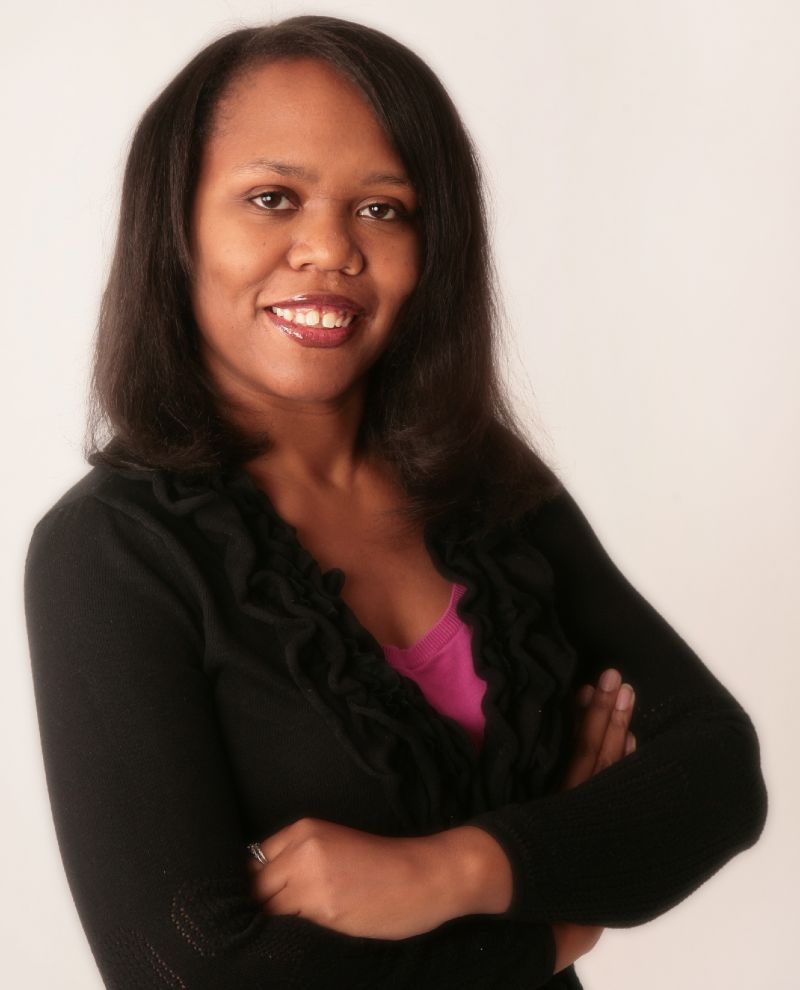Critically Acclaimed Children’s Book Author
Kelly Starling Lyons Interviewed by Troy Johnson
Published: Friday, August 28, 2020
Many children’s authors and illustrators come from the world of education but you also worked in the field of journalism for some major publications. What made you decided to shift gears and become a children’s author?
I’ve always been a storyteller at heart. When I wrote for Ebony magazine and newspapers, my focus was feature articles. I wanted to bring stories of real people to life so that you could see, hear and feel their worlds.
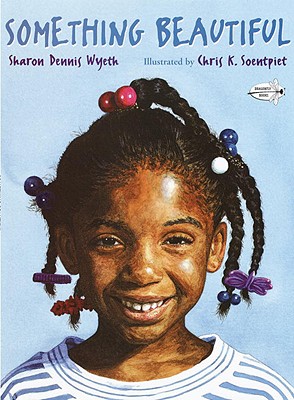 My calling to write for kids began when I saw Something Beautiful by Sharon Dennis Wyeth. That was my first time seeing a Black girl on the cover of a picture book. Looking at her face full of wonder and hair in ballies and barrettes made me think of my nieces, cousins and myself at that age. Immediately, I felt a connection.
My calling to write for kids began when I saw Something Beautiful by Sharon Dennis Wyeth. That was my first time seeing a Black girl on the cover of a picture book. Looking at her face full of wonder and hair in ballies and barrettes made me think of my nieces, cousins and myself at that age. Immediately, I felt a connection.
When I read the book, I was blown away. The girl learns the word beautiful in school. She goes around her neighborhood asking people what they consider beautiful. Then goes home and becomes an agent of change by helping to create it herself. With that social action, her beauty shines. I had never seen a picture book do that before. Each book I read, I became more inspired. Visiting Day by Jacqueline Woodson was another that put me on this path. I realized writing for kids was a way I could help make a difference.
How has working in the media world influenced your writing style?
As a feature writer, I tried to paint pictures with my words. I do the same as a children’s book author. I want to evoke emotion, transport you through the dialogue and setting, help you see and feel what’s happening.
Working in the media world also helped me think about the power of relationships between people — grandparents and grandchildren, parents and kids, teachers and students, bonds between friends. So many stories live in those interactions. Writing for newspapers and magazines taught me to look at the world with a writer’s eye.
While there are some authors who write for the full spectrum of Children’s Books, what made you decide to focus on picture and chapter books for middle grade readers?
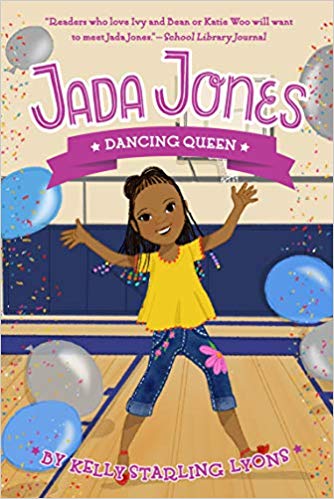 Picture books called me to write for kids. They will always hold a special place in my heart. Writing easy readers, picture books and chapter books lets young children know they’re seen and valued. It helps them hold their head higher. It lets them know they can create their own stories too.
Picture books called me to write for kids. They will always hold a special place in my heart. Writing easy readers, picture books and chapter books lets young children know they’re seen and valued. It helps them hold their head higher. It lets them know they can create their own stories too.
I want to hook kids on books when they’re little. For all kids, seeing themselves on the page removes the ceiling from their dreams. When elementary students read books that reflect their families and communities along with those that show them new worlds, books become friends.
My Jada Jones series has been a powerful example of that. Parents send me letters, pictures, and videos sharing how much the books mean to their kids. The latest, Jada Jones: Dancing Queen, celebrates young people who look out for each other, model kindness, and create change where they are.
Do you pick the book ideas or do people come to you with ideas?
Most often, I come up with my own ideas. I keep a running file in my computer of stories I’d like to write. I store ideas in a journal too. Sometimes when I visit schools kids ask me if I ever run out of ideas. The answer is no. They’re all around. You just have to know how to look.
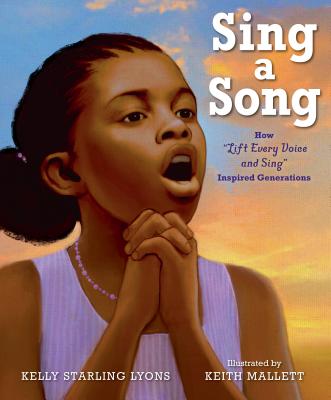 Stories can be inspired by memories, history, events in the news, an observation and so much more. The idea for my picture book, Sing a Song: How Lift Every Voice & Sing Inspired Generations, came from an exhibit at the Ritz Theatre & Museum in Jacksonville, Florida. It celebrated our Black National Anthem and the composers, James Weldon Johnson and J. Rosamond Johnson. There, I learned that the song was first sung on February 12, 1900 by a choir of 500 schoolchildren. Those kids grew up, kept “Lift Every Voice & Sing” in their hearts and passed it on. I knew I had to tell that story.
Stories can be inspired by memories, history, events in the news, an observation and so much more. The idea for my picture book, Sing a Song: How Lift Every Voice & Sing Inspired Generations, came from an exhibit at the Ritz Theatre & Museum in Jacksonville, Florida. It celebrated our Black National Anthem and the composers, James Weldon Johnson and J. Rosamond Johnson. There, I learned that the song was first sung on February 12, 1900 by a choir of 500 schoolchildren. Those kids grew up, kept “Lift Every Voice & Sing” in their hearts and passed it on. I knew I had to tell that story.
Occasionally, someone gives me a suggestion. Including a surprise guest in Jada Jones: Sleepover Scientist was the result of kids at a school asking me about a particular character. My agent, Caryn Wiseman, told me an editor was interested in a story about an architect who designed the National Museum of African American History & Culture. That turned into Dream Builder: The Story of Architect Philip Freelon.
I’ve also done a couple of works-for-hire where I’m given a person to write about. Even within that framework, there’s lots of creativity.
Who are some of the people that have illustrated your books?
I’ve been blessed to have stories illustrated by some of the best in the field, Peter Ambush, Daniel Minter, E.B. Lewis, Don Tate, Vanessa Brantley Newton, Luke Flowers, Keith Mallett, Laura Freeman and Nicole Tadgell. One of my forthcoming books will be illustrated by Floyd Cooper.
Who is on your wish list?
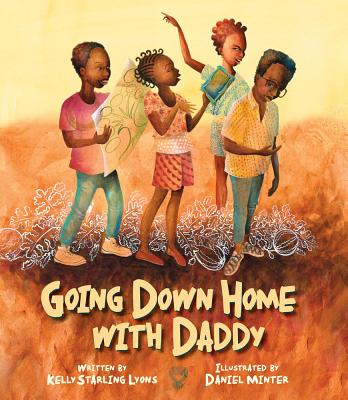 There are so many amazing illustrators. I have too many favorites to name. I enjoy starting new collaborations as well as doing repeat projects with artists. Daniel Minter and I have done two books together Ellen’s Broom and Going Down Home with Daddy. They won the Coretta Scott King Illustrator Honor and Caldecott Honor, respectively. Hoping we’ll do a third book some time soon.
There are so many amazing illustrators. I have too many favorites to name. I enjoy starting new collaborations as well as doing repeat projects with artists. Daniel Minter and I have done two books together Ellen’s Broom and Going Down Home with Daddy. They won the Coretta Scott King Illustrator Honor and Caldecott Honor, respectively. Hoping we’ll do a third book some time soon.
Has it been difficult to convince publishers to publish these little known stories that have gone on to become award winning books? What are some of the obstacles you’ve faced as a writer?
I had a wonderful welcome to the industry from Just Us Books. They published my first two titles, NEATE: Eddie’s Ordeal and One Million Men and Me, invested in my development and continue to support me.
But being a children’s book author takes patience and persistence. There are five years between my second and third books, four between my sixth and seventh. Having manuscripts turned down is part of the journey. I remind myself that it only takes one yes for a story to find a home.
Have some stories been rejected because an editor didn’t think they would resonate?
Yes. In the end, the ones that were published landed right where they should. I’m grateful for my agent and the editorial teams who have turned my stories into beautiful books. There’s a lot of work to do in making sure Black creators receive parity in the industry. I’m encouraged by the people who care.
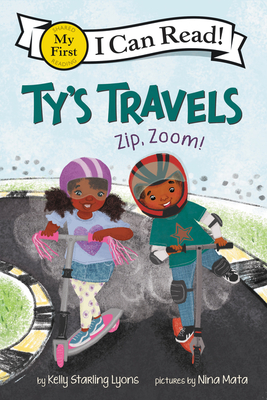 Ty’s Travels has made history by being the first “I Can Read” Series starring a Black family. I’m so excited that the first two books, All Aboard! and Zip, Zoom!, will be here soon [HarperCollins, September 1, 2020]. The opportunity to write an easy reader series came from a connection I made at Kweli: The Color of Children’s Literature Conference created by the wonderful Laura Pegram. My future editor, Tamar Mays, invited me to reach out about writing easy readers. I followed up. She gave me tips and my imagination began to soar.
Ty’s Travels has made history by being the first “I Can Read” Series starring a Black family. I’m so excited that the first two books, All Aboard! and Zip, Zoom!, will be here soon [HarperCollins, September 1, 2020]. The opportunity to write an easy reader series came from a connection I made at Kweli: The Color of Children’s Literature Conference created by the wonderful Laura Pegram. My future editor, Tamar Mays, invited me to reach out about writing easy readers. I followed up. She gave me tips and my imagination began to soar.
Before meeting her, I hadn’t thought about writing books for kids learning to read. But it has been so rewarding. Ty, my main character, is a tribute to my kids, boys in the book club I facilitate and children around the world who deserve to be the stars of stories too. I wanted to showcase their joy, creativity, ingenuity, brilliance, sweetness and spunk. I wanted to center and celebrate a Black family.
Thank you to my editor for believing in me and the importance of inclusion. New York Times bestselling illustrator Nina Mata was a gift to the project. Each time I look at her radiant art, I smile. Grateful for the publicity support I’m receiving from the team at HarperCollins and Vanesse Lloyd-Sgambati, founder of the African American Children’s Book Project. I hope Ty becomes a friend to many young readers.
What does your writers space look like?
I don’t have one dedicated space. I like to write during the morning hush. Sometimes I wake up with an idea, grab a bedside notebook and jot it down. Other times I rise before sunrise, come downstairs, get cozy on the couch and write. Once the day gets going, I’m usually at a table or desk.
A dream of mine is to have a special writing retreat in the backyard. I’d love to have a shed or cabin that’s full of light and the sounds of nature where I can create.
What advice would you give to someone who wants to write Children’s Books?
Write the story only you can tell. That advice was given to me early in my journey to write for kids. I return to it again and again. Let who you are, what you believe in, where you’re from and what you’ve overcome inform the stories you create. That brings authenticity to your work.
Fill your story with meaning and magic. Keep the child as the center. Empower your character to figure out challenges, celebrate victories and show the beauty of who they are.

